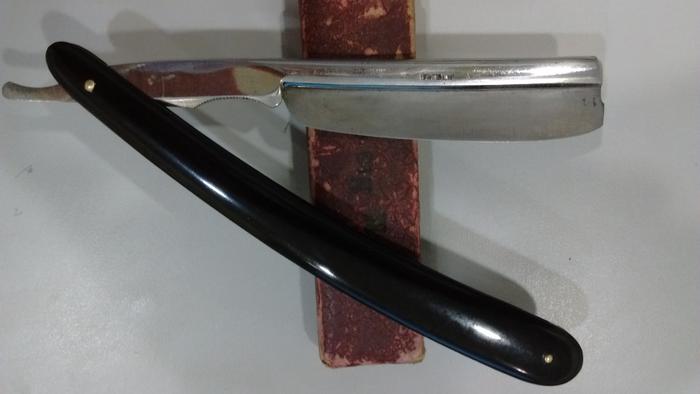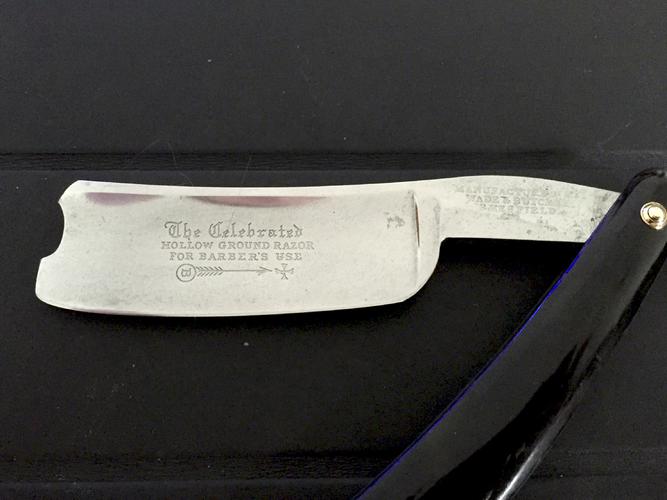Results 31 to 36 of 36
Thread: Losing my smile
-
01-22-2016, 08:54 PM #31

Tradition had nothing to do with my recommendation. The learning curve for honing a smiling wedge is a lot longer than a hollow ground straight edge. I was just trying to prevent excessive to the spine of your razor while you learned. It's your razor. Do as you wish but you asked for advise and I doubt you'll find many to disagree with my assessment. Good luck.
-
01-22-2016, 09:08 PM #32

One trick that hasn't been mentioned yet is to use a sharpie to ink the edge on both sides. Check the ink removal as you are learning the 'Rollin X' stroke. This should be most helpful to adjust your strokes so that you get even ink removal.
Smarter than I look or, not as dumb as I look. Whichever you prefer.
-
01-22-2016, 09:15 PM #33

Yeah, man. Not jet propulsion dynamics.
Choose a piece of flat glass and train your strokes on it. Slowly. Rock the blade, without any pressure, and let your muscles and brain learn and assimilate the movement to follow the smile. You'll know when you are ready to give it a go on a real hone.
Everybody has tendencies, some pals are toe-twisted, some heel-twisted at first, and the goal of this training is to achieve a well-balanced movement to give an appropriate treatment all bevel long. Your tendencies will show with time.
Choose a very slow and very high grit hone path at first (>8K), to make any mistakes easy to repair.
My first smiler was a pretty well preserved Erik Anton Berg frameback with a tighter arch at the toe than than heel, and I took this conservative approach because I never had a mentor here in Brazil. It was successful.

My best
-
The Following User Says Thank You to Matheus For This Useful Post:
spoken36 (01-26-2016)
-
01-26-2016, 08:58 PM #34Member

- Join Date
- Jan 2016
- Location
- Georgia, USA
- Posts
- 83
Thanked: 4
Well I practiced the rolling x, and I've had great results. My small amount of hone wear on my W&B is even, and I can cut hairs easily with the last 1/4" near the toe.
-
01-26-2016, 09:18 PM #35

Good job! It's not that difficult, just needs practice and attention to detail. I find watching the edge move the water on the hone (or working with a slurry - even better!) really helps get good results. With practice, it's surprising how radical a smile you can get scary sharp.
This is far from my most extreme smiler, but it's the easiest to lay hands on since I'm about to shave with it. I was honed on a King 1k with slurry to set the bevel, followed by 'La Petite Blanche' and 'La Verte' coticules, then fine tuned on an Escher. All of the stones were used with a slurry diluted to plain water, the Escher only gets a very light (misty) slurry and is quickly diluted to water. The reason for the Escher is to up the keenness level of the edge a tad without losing the smoothness left by the coticules.
For scale, the blade is a shade over 17/16 at the widest.

-
01-26-2016, 09:21 PM #36Member

- Join Date
- Jan 2016
- Location
- Georgia, USA
- Posts
- 83
Thanked: 4
I have one of these bid on eBay, the last one I tried to get went for $202. I just find this model very attractive.


 33Likes
33Likes LinkBack URL
LinkBack URL About LinkBacks
About LinkBacks








 Reply With Quote
Reply With Quote

